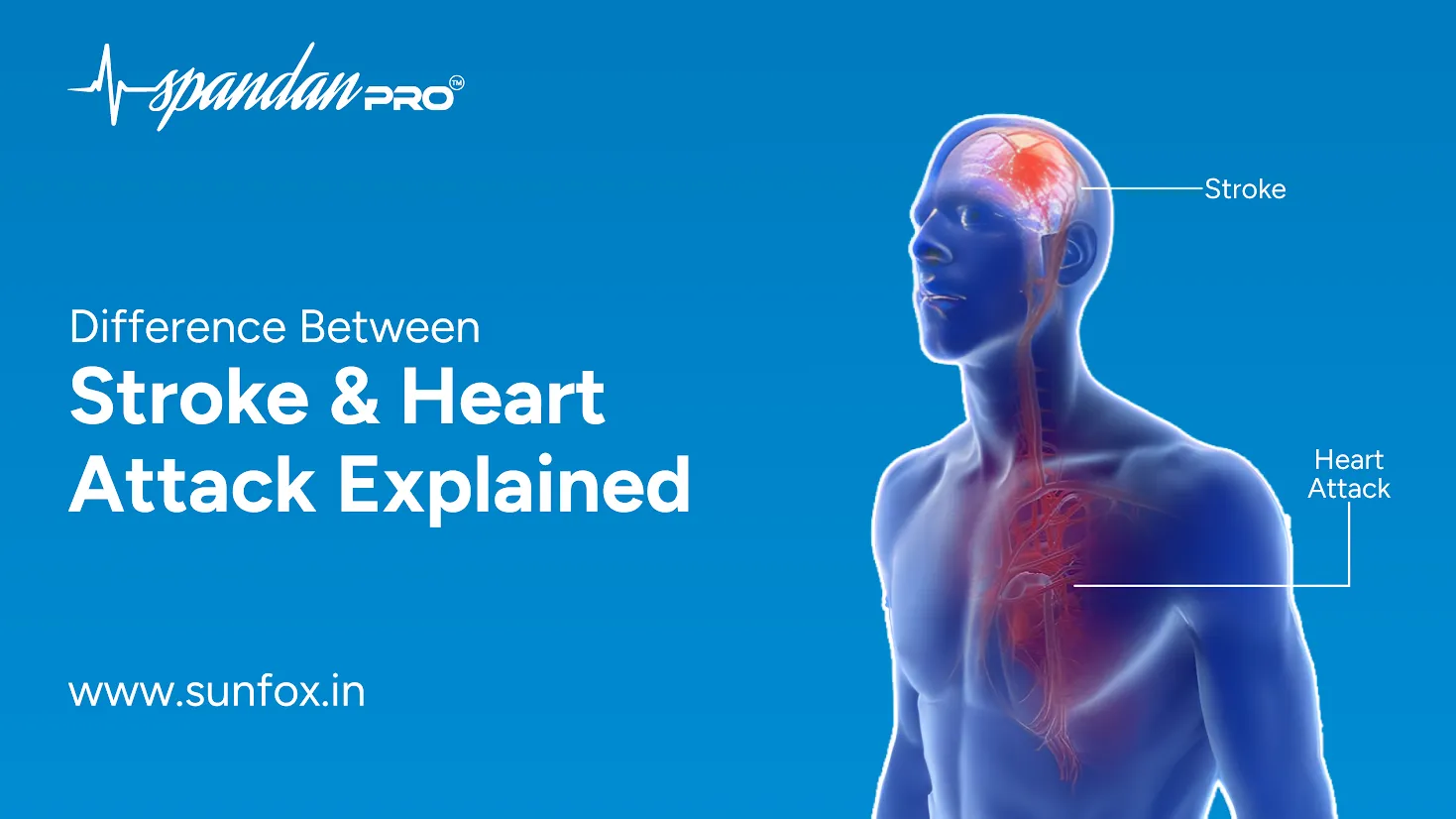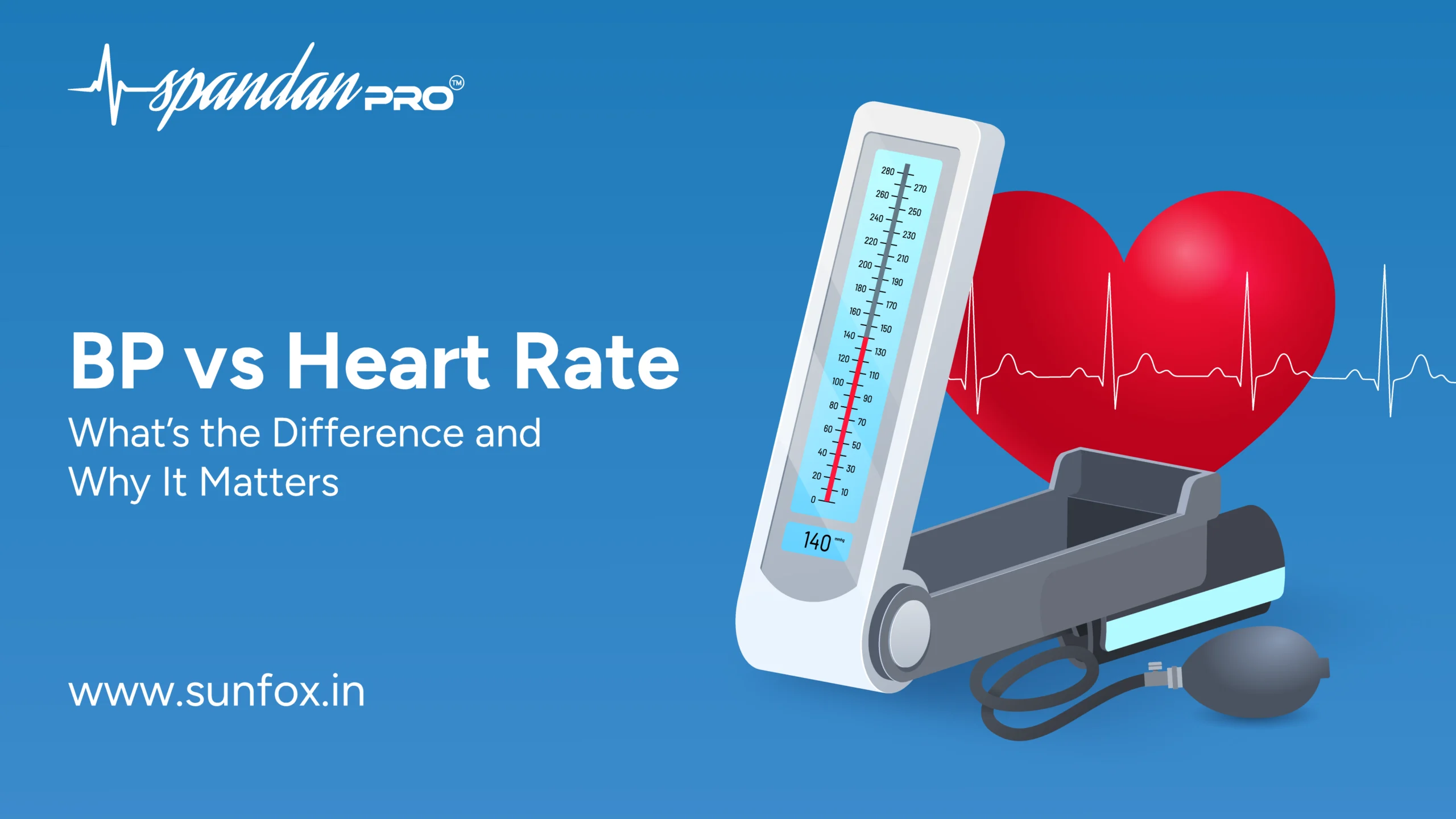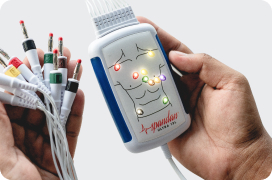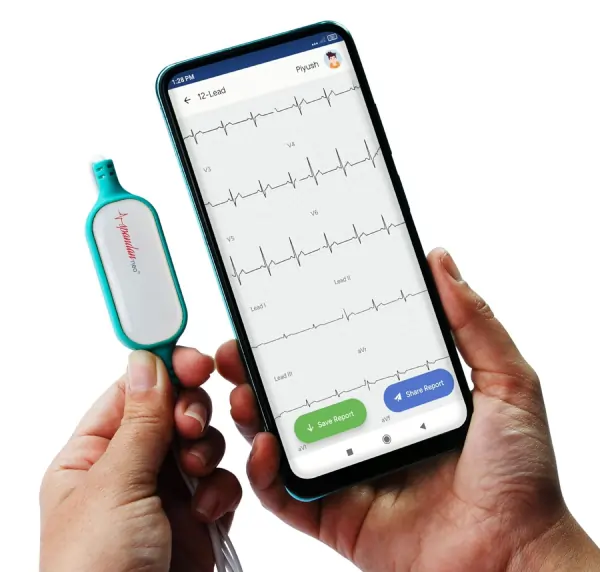
Role of ECG in Heart Attacks
Table of Contents
Whenever we feel any pain or pressure in our chest, the doctors first recommend us for an ECG, this noninvasive device helps the healthcare professionals to measure the electrical activity of the heart. It is the most common test done for the heart. It contains 12 leads that record the heart’s electrical activity. The role of ECG in Heart attacks is important and very helpful for healthcare professionals to do the medical intervention and decide the treatment accordingly because ECG is the first line test. So, let’s dive into this interesting blog on the Role of ECG in Heart Attacks.
Types of Heart Attacks
Before understanding the role of ECG in heart attacks, we must first understand its types and what they mean, after which we can understand where the role of ECG comes in the diagnosis of different types of heart attacks.
To give you an overview, A heart attack is also known as a myocardial infarction (MI). It occurs when the blood flow is blocked from reaching the heart and the heart muscles are restricted from oxygen. It is a serious condition in which quick medical intervention is required, or it can be fatal.
In different types of heart attacks, the ECG report shows different changes. The types of heart attacks are listed below:
- ST-Elevation Myocardial Infarction (STEMI): It is a type of Heart Attack that can be defined by the elevation of the ST segment in the ECG, This indicates a blockage in the coronary artery, which prevents the blood from flowing to the heart muscles, due to this there is a lack of oxygen flow to the heart muscles, from which heart begins to suffer damage.
- Non-ST-Elevation Myocardial Infarction (NSTEMI): In this type of heart attack the ST Elevation is not significant, instead, it may show ST segment depression or T wave inversions. It occurs when there is a partial blockage of a coronary artery, leading to reduced blood flow to a portion of the heart muscle.
- Coronary Artery Spasm: Also known as Prinzmetal’s Angina, It is a type temporary constriction that occurs in the walls of coronary artery, due to this for a temporary period the blood flow to the heart muscle stops that can lead to chest pain, it can occur late at night or in early hours of morning.
Role of ECG in Heart Attacks
It is already well known that the role of ECG in heart attacks is critical for both patients and medical professionals. Here’s a closer look at the functioning of the ECG, the particular deviations to watch out for during heart attacks, and the signs that these changes suggest:
1.Diagnosis:
ST-Elevation Myocardial Infarction (STEMI) key changes:
- Hyperacute T-waves: When observed as broad, symmetrical, and pointed waves on an ECG (electrocardiogram), hyperacute T waves are an indicator of ST-elevation myocardial infarction (STEMI). They can occur before ST elevation and Q waves, and they are frequently the first change noticed on an ECG.
- ST Elevation: This is a classic sign of STEMI,and defined by an increase of more than 1 mm in two contiguous leads on a 12-lead ECG. It is cause by is caused by a blockage in one or more coronary arteries,
- Pathological Q Waves: These Q waves, also known as pathological Q waves, are larger and deeper than regular Q waves. They usually appear six to sixteen hours following the onset of symptoms. yet sometimes they emerge sooner.They show that the heart is not electrically active, which is caused by scar tissue from a MI.
- T wave inversion: As ischemia worsens, T wave inversions may appear, which is indicative of persistent myocardial stress.
Non-ST-Elevation Myocardial Infarction (NSTEMI) key Changes:
- ST Segment Depression:Below its typical baseline position, the ST segment descends.This, which denotes myocardial ischemia from decreased blood flow, is the most usual finding in non-ST elevation myocardial infarction.
- Transient ST Elevation:Temporary elevation may be seen in the ST segment, but this is often transient. This may be a sign of acute ischemia alterations and might happen during episodes of chest discomfort.
- New T Wave Inversions:T waves might exhibit a downward curvature as opposed to their typical upward deflection.This can be a symptom of cardiac muscle injury and continuous ischemia.
Because of the nature and extent of the blockage involved, ST-Elevation Myocardial Infarction (STEMI) is typically regarded as more dangerous than Non-ST-Elevation Myocardial Infarction (NSTEMI). When a coronary artery is completely blocked, as occurs in STEMI, the heart muscle suffers severe and rapid damage from the full interruption of blood flow. This leads to a more serious ischemia injury, which frequently calls for fast, life-saving procedures like thrombolysis or angioplasty to restore blood flow and reduce damage. On the other hand, NSTEMI is characterized by a partial blockage, which usually causes less severe damage to the heart muscle even though it is still significant and needs to be treated right away. Rapid diagnosis and care are vital because of the acute nature of STEMI and its increased risk of complications and mortality.
Coronary Artery Spasm (Prinzmetal’s Angina) key changes:
- ST Segment Elevation: The transient elevation of the ST segment is an important indicator in cases of CAS. This increase indicates that there is a sudden lack of blood supply causing acute myocardial ischemia during the spasm. It typically disappears after the spasm has calmed down.
- S Wave Changes:The intensity of the S wave can decrease or vanish during a spasm. Variations in the S wave may indicate changes in heart electrical activity caused by ischemia.
- Negative U Wave:During an active spasm, a negative U wave may occur, indicating alterations in repolarization processes, typically linked to myocardial ischemia.
- T Wave Changes:During the recovery phase from ischemia, affected coronary arteries may show Negative T waves, suggesting ongoing myocardial stress and reflecting the ischemic changes that occurred.
2.Monitoring and Management
Continuous ECG monitoring in hospitals can identify arrhythmias and other issues that may develop during a heart attack or its treatment. Serial electrocardiograms can be utilized for tracking changes, evaluating treatment efficacy, and identifying deterioration.
3.Assessment of Severity
The ECG alterations and severity can give information about the level of heart injury and how much the coronary artery is impacted. Aids in determining the likelihood of complications and the necessity for immediate action.
4.Guiding Treatment Decisions
ST segment elevation usually implies the requirement for immediate reperfusion therapy, like thrombolytics or angioplasty. Successive ECGs can assist in monitoring the advancement of the condition and direct subsequent treatment decisions.
In summary, the role of ECG in heart attacks is paramount, serving as the first-line diagnostic tool that provides critical information about the heart’s electrical activity during acute events. By identifying key changes associated with different types of heart attacks,such as ST segment elevation in STEMI, ST segment depression in NSTEMI, and transient ST elevation in coronary artery spasms,healthcare professionals can make timely and informed decisions about treatment strategies.
Continuous ECG monitoring further enhances patient management by detecting arrhythmias and assessing treatment effectiveness. Ultimately, understanding the vital role of ECG in heart attacks not only aids in rapid diagnosis but also improves patient outcomes in life-threatening situations, underscoring its essential place in modern cardiology.















